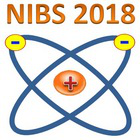Speaker
Mr
Tiago Morais Sarmento
(ISIS Neutron Source)
Description
The standard ISIS Penning-type H– ion source operates with plasma and beam duty cycles of 4% and 1.25%, respectively, at 50 Hz repetition rate. It uses pulsed hydrogen injection, whereas cesium (Cs) is injected continually from an external oven. The oven is usually operated at around 160 °C, which is a compromise between high H– output, long-term plasma stability and low spark rate. Neutral Cs escapes the ion source between plasma pulses and must be trapped. On the ISIS operational source, a refrigerated ‘cold box’ is used to trap Cs vapor, however up to 40% beam-loss occurs on this bulky assembly. A vessel for extraction and source plasma analyses (VESPA) has demonstrated improved beam transport with the cold box removed, albeit at a higher un-trapped Cs flux. Therefore a new system is being trialled on the VESPA involving POCO CZR-4 graphite used as a Cs getter. Four blocks with a mass totalling 200 g are positioned downstream of the ion source on a mounting frame, such that they face the source directly with a large combined surface area. The blocks were designed in ANSYS for sufficient thermal isolation to permit in-vacuum bake-out at up to 800 °C. A suite of three quartz crystal microbalances (QCMs) detect Cs flux at various positions in the vacuum vessel. The flux is measured at a range of graphite heating powers to ascertain the gettering efficiency vs. temperature. In general, they work best around room temperature so are a true passive Cs trap, effective for any ion source facility which uses Cs.
Initial results are presented comparing the Cs flux measured using QCMs to the Cs0 and Cs+ optical emission intensities as a function of Cs oven temperature. This allows a comparison between the amount of Cs present inside the pulsed plasma and the time-integrated Cs flux escaping between plasma pulses, which is subsequently captured. These quantitative Cs measurements and trapping schemes are important for long-term operation of a Penning source with twice the linear dimensions (the ‘2X source’), which has been demonstrated to emit a substantially higher Cs flux through its larger beam emission aperture.
Primary author
Mr
Tiago Morais Sarmento
(ISIS Neutron Source)
Co-authors
Dr
Dan Faircloth
(STFC)
Mr
John MacGregor
(STFC)
Mr
Mark Whitehead
(STFC)
Dr
Olli Tarvainen
(STFC)
Mr
Rob Abel
(STFC)
Dr
Scott Lawrie
(STFC)
Mr
Trevor Wood
(STFC)

